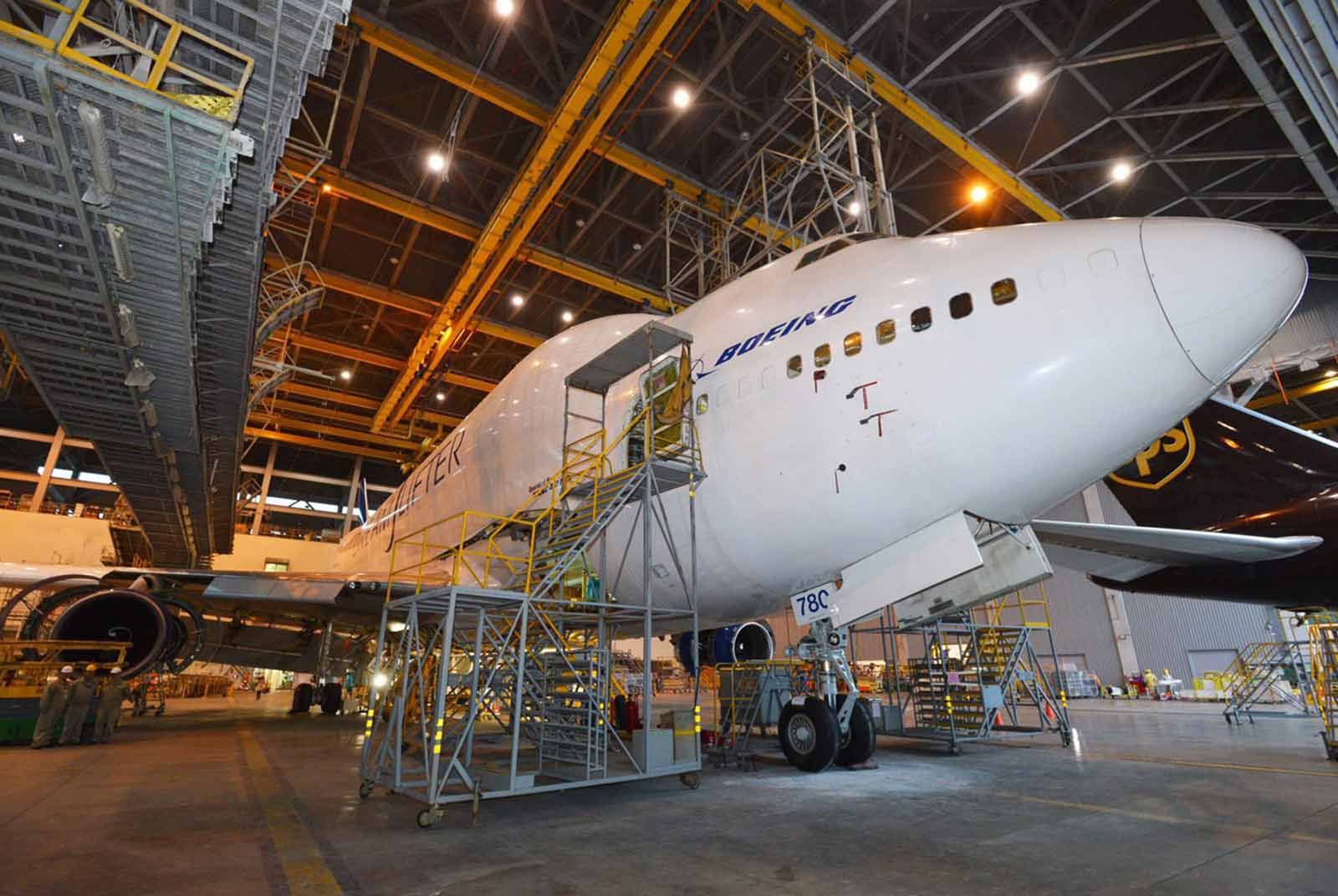With Discount Carriers on the Rise, Taiwan’s Aviation Industry Gets a Boost

Source:Taoyuan City Government
What kind of talent will Taiwan need in the next five to ten years? There are many possible answers, but professionals who know how to fix or build aircrafts will certainly be near the top of the list.
Views
With Discount Carriers on the Rise, Taiwan’s Aviation Industry Gets a Boost
By Ching Fang Wuweb only
In recent years, the emerging tourism market in Asia Pacific, coupled with the popularity of low-cost carriers, has boosted the demand for workers in the industries of aircraft maintenance and aviation research and development. Some schools even invested a billion dollars to build a center for aircraft maintenance and manufacturing to teach students how to fix and build airplanes. The push to develop indigenous aircrafts domestically has also contributed to this burgeoning sector. The fight for human resources in the aviation industry is about to begin.

Evergreen Aviation Technologies Corp., a part of the Evergreen Group, achieved international acclaim for refitting four 747 Large Cargo Freighters, or “Dreamlifters”, for Boeing. (Source: Taoyuan City Government)
What kind of talent will Taiwan need in the next five to ten years? There are many possible answers, but professionals who know how to fix or build aircrafts will certainly be near the top of the list.
Earlier this year, the two giants of the aviation industry—Boeing and Airbus—both published market reports that forecasted the steady growth of demand for tourism-based transportation. In the next twenty years, air fleets around the world will expand by a total of forty thousand aircrafts. The market value will be more than six trillion U.S. dollars. The market for aircraft maintenance will surpass nine trillion U.S. dollars.
The most directly contributing factor is the boom of low-cost carriers (LCC), colloquially known as budget or discount carriers, in Asia Pacific. Small, single-aisle aircrafts will make up seventy percent of new airliners on the market. Airbus and Boeing are expected to fight tooth and nail over this lucrative slice of the industry.
For example, the Airbus A320 and the Boeing 737-800 are both popular with LCCs. Airbus has shifted its focus from Europe and the Americas to target Asia Pacific as its next priority territory.
Since every airplane must be inspected and maintained between each landing and take-off, the battle to become the aircraft maintenance center of Asia is already in full swing.
Students Are Being Hired Before They Graduate
Earlier this year, Air Asia Company Limited (亞洲航空), one of the oldest brands in the aircraft maintenance industry, achieved great success in its business with Southeast Asian LCC companies. It maintained and repaired a record number of planes. Evergreen Aviation Technologies Corp. (長榮航太), a part of the Evergreen Group, was also lauded for refitting four 747 Large Cargo Freighters, or “Dreamlifters”, for Boeing. This paves the way for more orders from the aviation giant in the future.
 Source: Air Asia
Source: Air Asia
Wu Wen-chung (吳文忠), Department Head and Director of the Department of Aeronautical Engineering at National Formosa University (虎尾科技大學飛機工程系), points out that many factors are contributing to the growing demand for workers in the aircraft maintenance industry. These include the establishment of new airline companies, the expansion of existing companies, the success of LCCs, and the replacement of older, less fuel-efficient models. This growing demand will inevitably lead to companies sending recruiters to campuses across the country.
“We recently trained a batch of more than twenty senior students for Air Asia. The students signed contracts even before they graduated. They were also awarded with scholarships,” says Wu. He emphasizes that the demand for aircraft maintenance professionals will only increase with every passing year. “At the moment, they (aerospace and maintenance companies) are really hurting for talent.”
There are about nine hundred students in the Department of Aeronautical Engineering at National Formosa University. It’s the biggest department on campus, and it has the most resources. In 2017, Formosa University announced it will invest a billion Taiwan dollars to build an aircraft maintenance and aviation manufacturing center in the new campus near the high speed rail station. This is their investment in the future business of aircraft maintenance in Taiwan.
The Taiwanese aviation industry has an annual worth of 120 billion Taiwan dollars. Sixty percent of this money is in aircraft maintenance. Its advantage lies not only in its globally recognized professional skills, but also in its highly competitive wages and benefits. But more time is still needed before Taiwan becomes the center of aircraft maintenance in Asia.
“The value of the aircraft maintenance industry in Singapore surpassed us as far back as the year 2000,” says Wu. But if Taiwan continues to invest in technology and talent, and if it also attempts to enter the more lucrative engine maintenance market, it is not impossible to catch up with Singapore.
Elite Aviation Researchers are New Darlings in the Job Market
In addition to maintenance, highly trained aviation researchers will also benefit from Taiwan’s push to produce indigenous aircrafts domestically. They are the new darlings of the Taiwanese job market. This will not only benefit Aerospace Industrial Development Corporation (漢翔; AIDC), the biggest aircraft manufacturing company in Taiwan, but also the aviation research team at the National Chung-Shan Institute of Science and Technology (中山科學院; NCSIST).
This is the kind of energy all the stakeholders in the Taiwanese aviation industry—be they private businesses, government officials, or academics—have been looking forward to for the last thirty years, ever since the Indigenous Defense Fighter “Ching-Kuo” (經國號) was developed in 1989. Taiwan was able to manufacture its own fighter jet, but then the purchase of the American F-16 fighters brought Taiwan’s aerospace and defense industry to a halt.
Have you read?
♦ The Heroine of Taiwan’s Aviation Industry
♦ Machinery Industry Takes Aim at Trillion-Dollar Goal
♦ ‘Made-in-Taiwan’ the New Weapon of World No. 1s
“Some of our best minds went to Korea,” Chi Li-Pin (齊立平), director of aerospace at NCSIST, says with a sigh. At that time, Korea was developing its own T-50 Golden Eagle trainer. The Taiwanese team that developed the IDF was even brought in as consultants. Now, Korea is exporting its T-50, while Taiwan suffered a talent gap for nearly three decades.
In 2017, Taiwan announced its policy to produce aircrafts domestically. Sixty-six new advanced jet trainers will be developed and manufactured in Taiwan. Renewed interest in the defense aerospace sector has directly affected the atmosphere on campuses across the nation.
 Developed by AIDC, Taiwan's new indigenous advanced jet trainer “Yung Yin” was officially unveiled at the end of September. (Photo by Chien-Ying Chiu/CW)
Developed by AIDC, Taiwan's new indigenous advanced jet trainer “Yung Yin” was officially unveiled at the end of September. (Photo by Chien-Ying Chiu/CW)
“The last time it was this hard to get into the department of aeronautics, the year was 1988,” says Leu Tzong-Shyng (呂宗行), Chairman of the Department of Aeronautics and Astronautics at National Cheng Kung University (成功大學航空太空工程研究所). During the era when Taiwan’s policy toward building a self-reliant defense industry was virtually non-existent, research in aeronautics shifted toward civil aviation. Many students also adjusted their career paths. “Lots of students who graduated from here went on to become process engineers at TSMC.”
Taiwan has not been able to offer abundant employment opportunities in the field of aviation research for many decades. Many students who studied aeronautics went on to work in the electronics industry after graduation. Though their jobs paid handsomely, it was not what they were trained to do. Leu has a student who stewed at his job at TSMC for years. As soon as he heard the NCSIST was putting together a team to build Taiwan’s own jet fighter, he immediately quit his job to sign up.
But the work to build these sixty-six advanced jet trainers is just beginning. Leu says after thirty years of losing talent to other industries and countries, it will take at least five to ten years to train a new generation of aviation researchers and engineers. “The generation that built the IDF is retiring, they must pass on the torch while they can,” he says. But this kind of talent is highly reliant on the direction of Taiwan’s national policy. The push to build Taiwan’s own self-reliant defense industry needs to continue. Even if weapons must be purchased from aboard to booster our defense forces, the domestic industry cannot be allowed to die out. Only then will Taiwan have the chance to truly create its own national defense prowess.
Translated by Jack C.
Edited by Sharon Tseng












